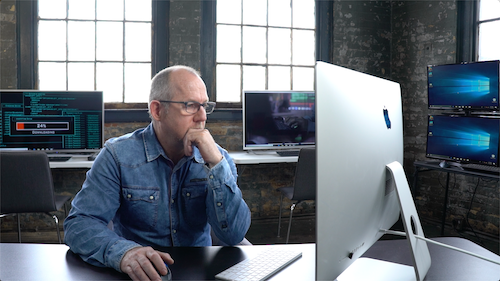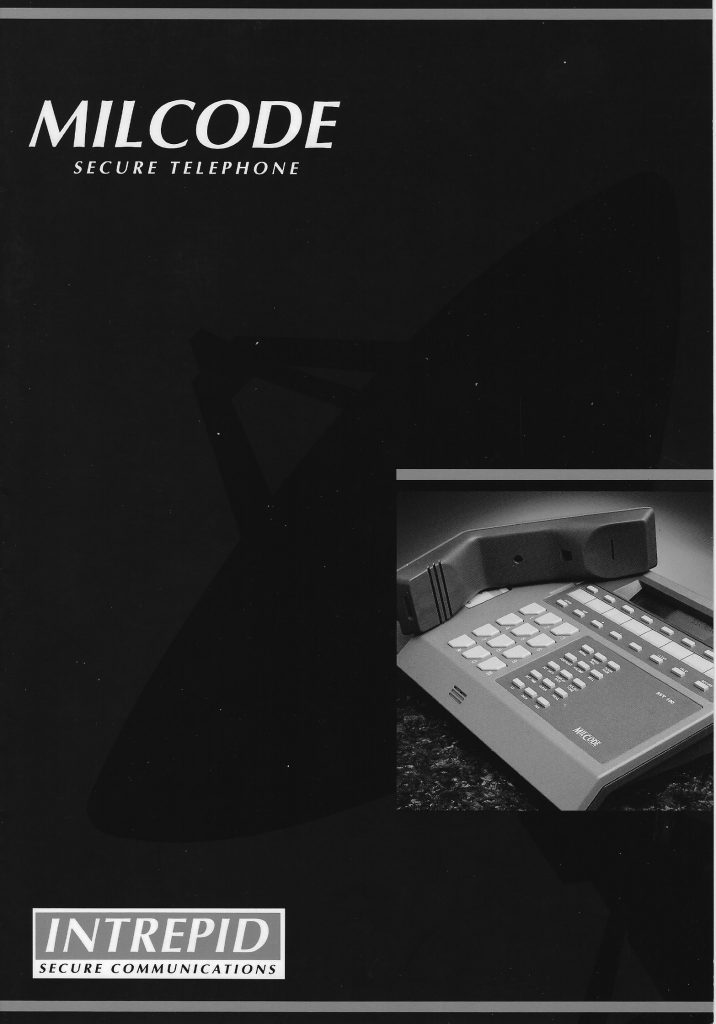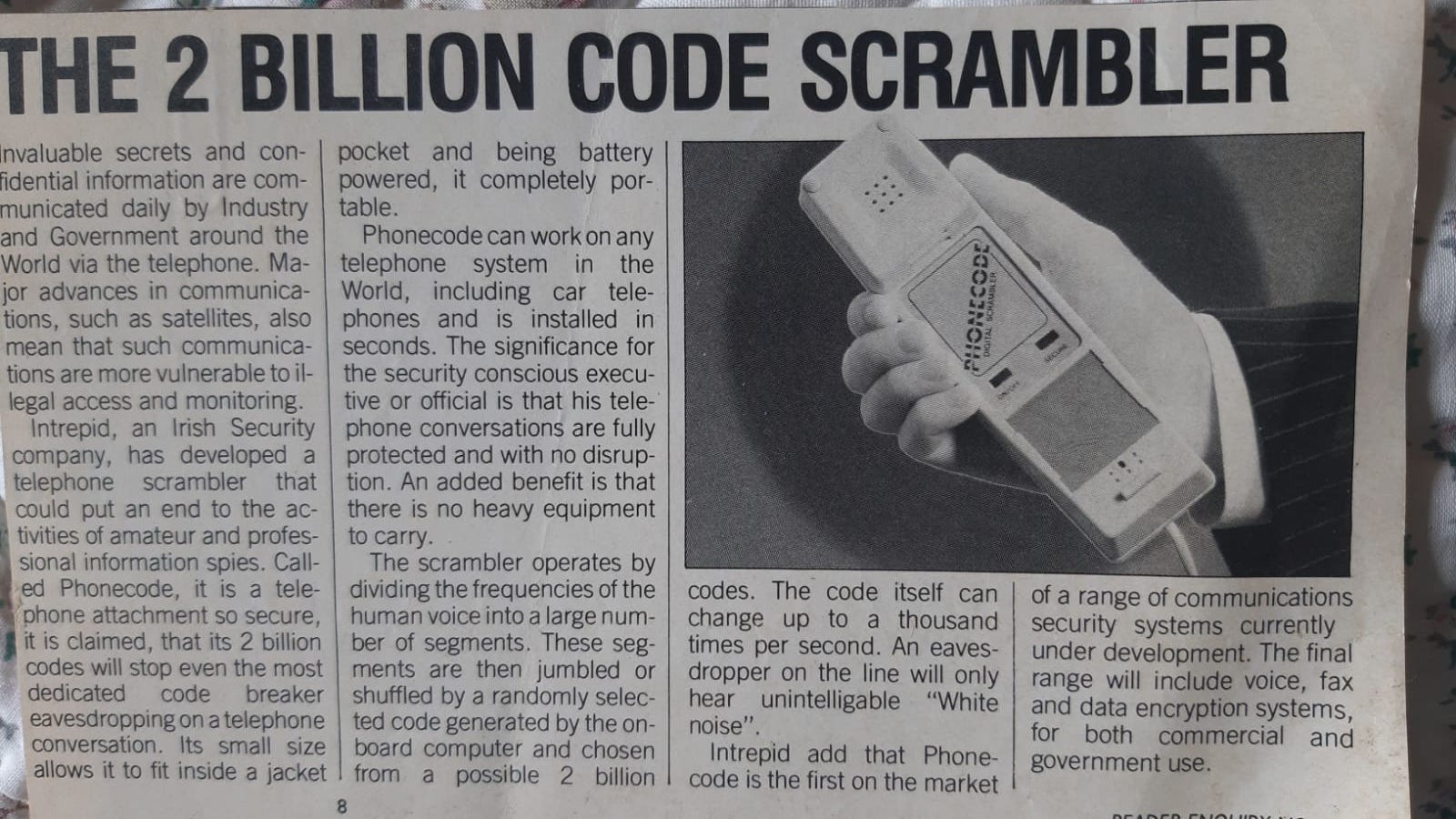Meet the Man from Intrepid
A chance encounter with Ireland’s military intelligence led Neal O’Farrell down an encryption path that would put him into direct conflict with the NSA and a competition to build the world’s most secure secure telephone.

Neal O’Farrell’s involvement in encryption goes back more than 40 years. It began in 1982 when straight out of college Neal was approached by a software startup looking for ways to protect their expensive new accounting software from being pirated.
The solution he found was a plug in “dongle” that used a type of encryption known as the Data Encryption Standard, or DES, and that’s where it all began.
A couple of years later and in response to a national phone tapping scandal, Neal developed a telephone scrambler called PhoneCode to help the Irish government upgrade its aging secure telephones. Not long after that and still in his twenties, Neal was awarded the first ever contract to encrypt Ireland’s national ATM network.
His big break came in 1988 when he was approached by the Irish Department of Defense with an unusual request. The US National Security Agency had just released the latest version of the STU3 or STU-III, Secure Telephone Number Generation 3, widely regarded as the most secure secure telephone in the world.
The STU-III had been jointly developed by the NSA, AT&T, RCA, and Motorola, took more than a decade to develop, and at a cost believed to be more than $50 million.
Apart from being very expensive, at up to $6,000 per phone, the phone was widely rumored to have a back door that would allow the US government to listen into any conversations on the phone. Because the STU-III was used right up to presidential level, that could create significant security and political challenges.
As a neutral country, Ireland had no restrictions on the development of advanced encryption systems and algorithms. And with Neal’s experience with both voice scrambling and data encryption, the Irish Defense Department hoped that Neal could blend those skills to come up with a better version of the STU-III. A safer, less expensive, and less restrictive European rival.
 Neal accepted the challenge, the project was named Intrepid, and with funding from the Irish government and local investors less than 18 months later Neal and his team of nearly 15 announced the arrival of what would eventually be called Milcode.
Neal accepted the challenge, the project was named Intrepid, and with funding from the Irish government and local investors less than 18 months later Neal and his team of nearly 15 announced the arrival of what would eventually be called Milcode.
Milcode quickly won the crown as the world’s most secure secure telephone, and at the same time solving many of the technical and speech quality issues that had plagued the STU-III for years. In addition to encrypting speech, Milcode could also encrypt data and fax communications. And for as little as $1,500 per phone, it put truly secure communications within reach of a much bigger audience.
Neal and his team also developed Faxcode, the world’s first fully encrypting fax machine.
But like a number of other encryption startups, Intrepid became victim of the Crypto Wars and efforts by the US government to stifle any efforts to provide unbreakable encryption to the masses.
Intrepid soon became a target for the US government as the Milcode phone, if widely adopted, threatened their global eavesdropping capabilities and especially the code-breaking capabilities of the Echelon program.
After a short campaign of bomb threats, break-ins, and blacklisting, Intrepid finally folded in 1991.
Neal later moved to London where he worked with GCHQ on the development of a new secure telephone based on the Clipper/Skipjack encryption system. The Clipper chipset had also been developed by the NSA but was later abandoned for a number of reasons including known security weaknesses and concerns over a deliberate backdoor that could allow for warrantless government surveillance.
